

 .
. 
 .
. 
Havana is a historically fascinating river town that has undergone an extraordinary revitalization in less than ten years, notwithstanding the time lost to the Covid-19 pandemic. Not only does it have beautiful residential neighborhoods, red brick-paved streets, a newly vibrant business district, and a riverbank park, it offers stunning views of the graceful, steel truss Lucas bridge and the many commercial barges that move along the Illinois River. .
. 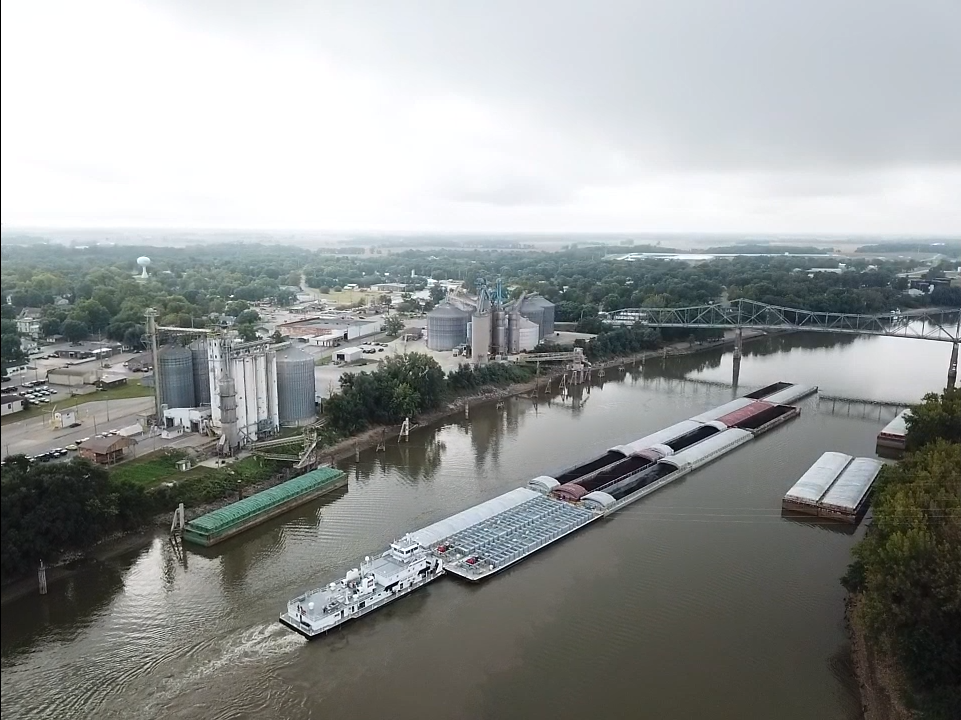
 David Alan Badger drawing
David Alan Badger drawing .
. 
The downtown business district has been brought back to commercial life and its architecture has been saved. The similarity between the historic postcard (above left) and the streetscape today is already yielding financial and social dividends in Havana.
 The Havana Water Tower is an actual water tower which, until 1962, was Havana’s only supply of water. It was built in 1889 in the style of a lighthouse and certainly is a visible landmark. It is listed on the National Register of Historic Places. But the NRHP designation does not guarantee survival. The tower’s water was drained in 2012 out of fear that the structure’s stability was not reliable. Every effort should be made to maintain this marvel.
The Havana Water Tower is an actual water tower which, until 1962, was Havana’s only supply of water. It was built in 1889 in the style of a lighthouse and certainly is a visible landmark. It is listed on the National Register of Historic Places. But the NRHP designation does not guarantee survival. The tower’s water was drained in 2012 out of fear that the structure’s stability was not reliable. Every effort should be made to maintain this marvel. .
. 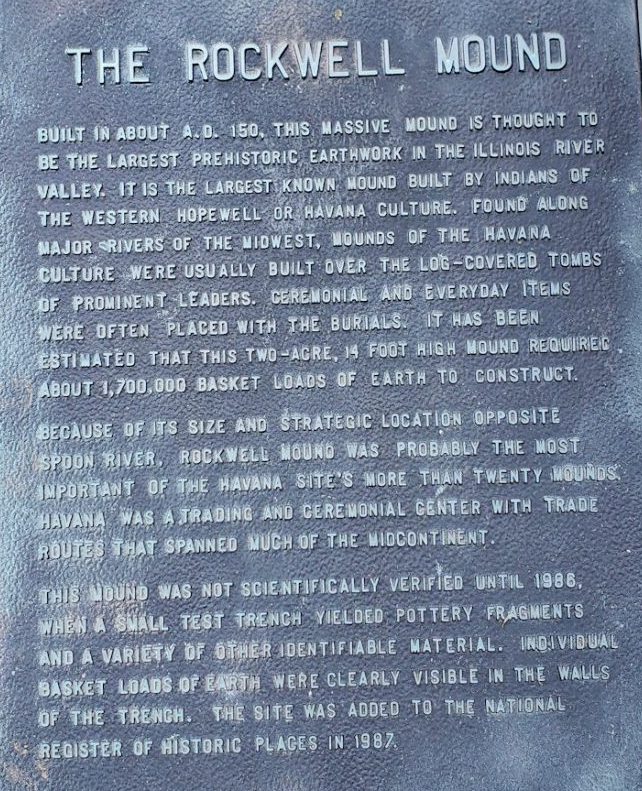 Rockwell Mound
Rockwell Mound
One of the most important archaeological manifestations of ancient Hopewell society is found in the Illinois River Valley at Havana, hence the name given to the remains. Havana identifies the location in which the diagnostic remains were first identified and where they are best represented. Rockwell Mound is the largest western Hopewell earthwork and dates to the second century AD. Dickson Mounds Museum in nearby Lewistown provides a comprehensive view of Native American life in this region before the European conquest.
Moreover, Havana has two Lincoln-related monuments plus a Civil War Union soldiers monument.



Listen: https://www.youtube.com/watch?v=SWJcpM3Nc-Y&list=RDSWJcpM3Nc-Y&start_radio=1 a beautiful song by Edward David Anderson about Havana as a river town
a beautiful song by Edward David Anderson about Havana as a river town This Smithsonian Main Street exhibition is well deserved in Havana.
This Smithsonian Main Street exhibition is well deserved in Havana.
Havana Spark! is remarkable accurate for this river town. Havana has more community spirit, gumption and sense of identity than any other town the Mythic Mississippi Project has encountered during its fieldwork. Led by visionary local citizens, including entrepreneurs, and supported eagerly and creatively by its municipal government – and lucky by its location, the history that has evolved there, and the fact that there still is a density of architecturally worthy buildings that generate an appealing streetscape – Havana is an anchor of the Western Illinois Pioneer Trail. The goal is to link it to the other communities in the hope that a spillover effect is created.
PUBLIC ART: MURALS
Wall murals are a proven, cost-effective way of sprucing up buildings. They also are a reflection of how a building owner or entire town wishes to portray itself. They may recall history. They can be advertising for a business. And some are artistic in and of themselves. Regardless, they are eye-catching. Havana has a significant public art program. Let’s look Havana’s wall murals.
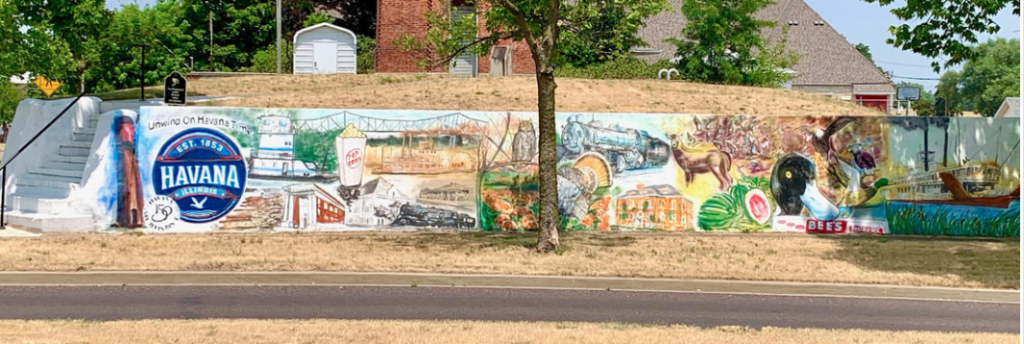
.


 .
. 

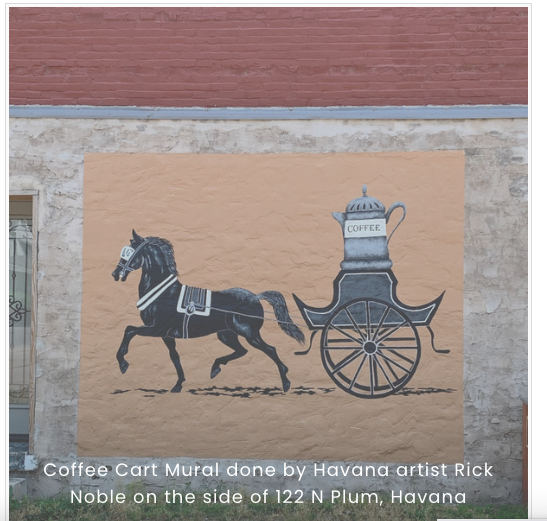
 .
. 

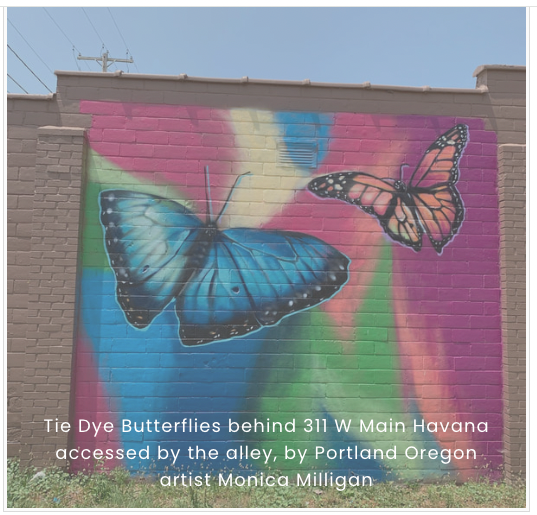 .
.